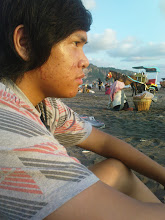 (Credit: Screenshot by Lance Whitney/CNET)
(Credit: Screenshot by Lance Whitney/CNET)
The Windows 8 desktop starts off as a clean slate with no clear access to the applications and features you need. Here are some tips on how to create the familiar desktop you know and sometimes love.
Accessing your desktop from the Metro Start screen is just a simple matter of clicking the tile for desktop. You'll then see the familiar interface with just the Recycle Bin on the desktop itself and icons for Internet Explorer and Windows Explorer on the taskbar.
Setting up the desktop
OK, let's say you want to first populate the desktop with shortcuts for My Computer, Network, and your personal folders. Right-click anywhere on the desktop and choose Personalize from the pop-up menu. Click the option to change desktop icons. Select the icons you want to appear on the desktop and click OK.
OK, let's say you want to first populate the desktop with shortcuts for My Computer, Network, and your personal folders. Right-click anywhere on the desktop and choose Personalize from the pop-up menu. Click the option to change desktop icons. Select the icons you want to appear on the desktop and click OK.
You can also add other folders and applications to the desktop, such as Documents. Open Windows Explorer from the taskbar. Select the icon for Documents and drag it to your desktop to create a shortcut. Now do the same for Pictures, Music, and any other folders or features you want to see on the desktop.
Setting up the Taskbar
You can customize the Taskbar just as in Windows 7. For this, you'll want to bounce back to the Metro Start screen by pressing the Windows key on your keyboard (or moving your mouse to the lower left hot corner and clicking the thumbnail for the Metro Start screen).
You can customize the Taskbar just as in Windows 7. For this, you'll want to bounce back to the Metro Start screen by pressing the Windows key on your keyboard (or moving your mouse to the lower left hot corner and clicking the thumbnail for the Metro Start screen).
In the Metro screen, right-click your mouse to display the All Apps icon at the bottom of the screen. Click All Apps to view a list of all available programs. You'll find the familiar Windows accessories on the right. Right-click the icon for the program you want to add to the taskbar. Then click the option at the bottom to pin to taskbar.
If your favorite app doesn't appear in the Apps window, you can always search for it. Press the Win+Q keyboard combination to launch the search. Start typing the name of the app in the search field. Right-click the app when it appears in the Search results and click the option to pin to Taskbar.
 (Credit: Screenshot by Lance Whitney/CNET)
(Credit: Screenshot by Lance Whitney/CNET)
You can also access the entire array of desktop features and accessories from the Taskbar.
Cycle back to the desktop by pressing the Win key. Right-click the Taskbar, move to Toolbars at the top of the pop-up menu, and then select desktop. An icon for desktop will appear on the Taskbar. Click the double arrow to the right of the icon, and you'll see options for an array of Windows applications and features, such as Computer, Control Panel, Network, Libraries, and all your personal folders. You can even drag the desktop toolbar to the left to expand it.
A couple more tips
Microsoft has included a handy menu of traditional Windows features and accessories, which you can access either from the Metro Start screen or the desktop.
Microsoft has included a handy menu of traditional Windows features and accessories, which you can access either from the Metro Start screen or the desktop.
Move your mouse to the lower left hot corner until you see the thumbnail for either the Metro UI or the desktop. Right-click your mouse, and a pop-up menu will appear with such options as Programs and Features, Network Connections, Task Manager, Control Panel, Command Prompt, Windows Explorer, Search, and Run.
Ultimately, you don't have to jump to the desktop anytime you want to open a non-Metro feature. Instead, you can pin your favorite non-Metro apps to the Metro screen itself. To do this in the desktop, right-click the icon for the application and choose the option to Pin to Start. To do this from the Metro UI, locate the item from the Apps menu or by searching for it. Right-click its icon and choose the Pin to Start option.
Though Microsoft is touting the Metro UI with Windows 8, the desktop is still alive and well. With a little bit of work you can customize the new OS to easily access all your favorite traditional applications and features.












0 komentar:
Posting Komentar